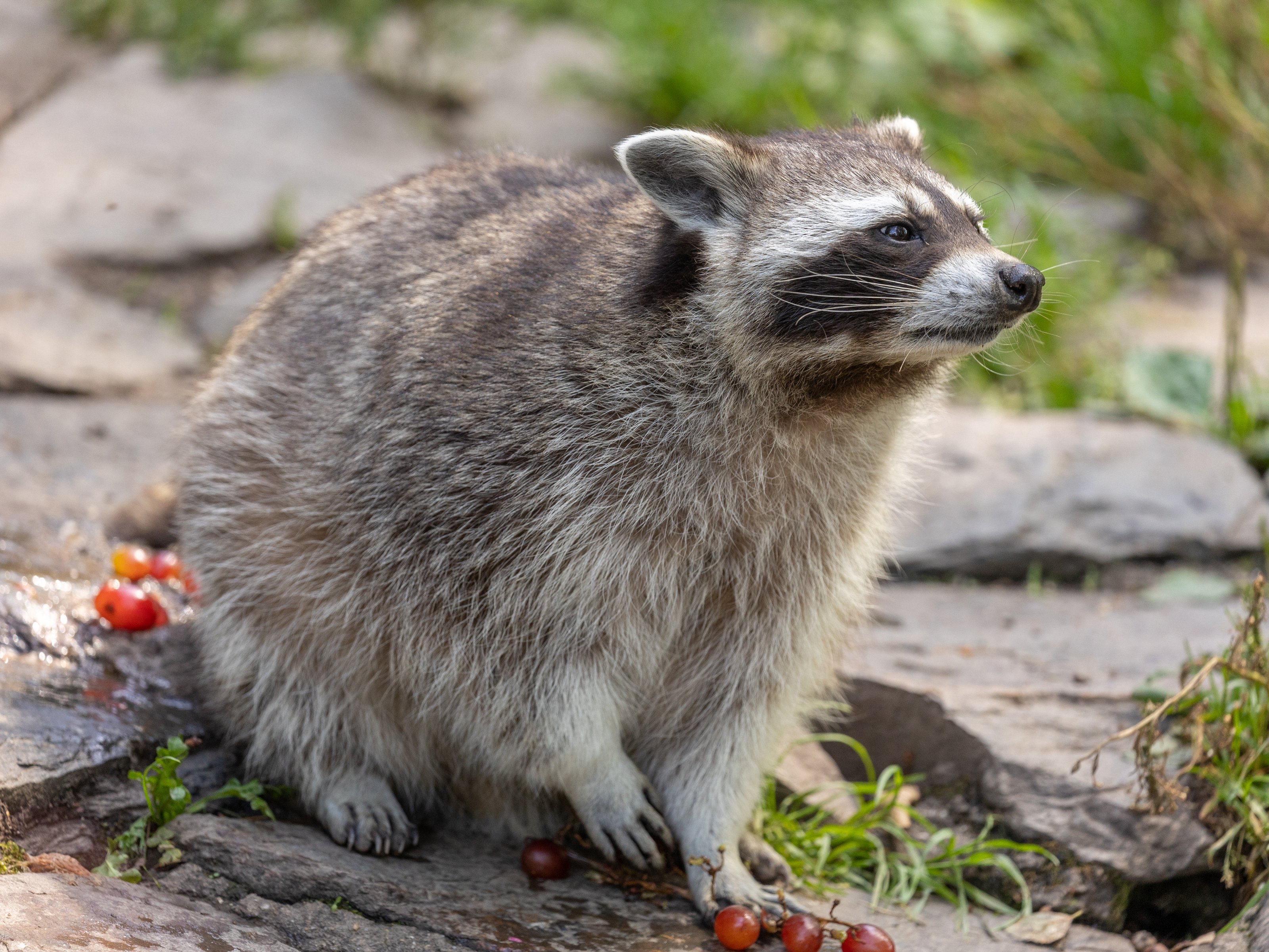
Station 22 Waschbär
In die Herzen mancher Zoobesucher hat er sich schon eingeschlichen, der Waschbär. Mit seinem vermeintlich gründlichen waschen des Futters, auch wenn dies nur eine sogenannte Ersatzhandlung und Imitation der Nahrungssuche an Fluß- und Seeufern ist, bei der er eigentlich nach Krebsen und anderen Futtertieren sucht. Er besitzt eben einen ausgeprägten Tastsinn.
Sind die Waschbären auch noch so possierlich anzuschauen, haben sie sich doch den Unmut der Behörden auf sich gezogen, die diese als Invasive Tierart eingestuft haben. Ursprünglich in Nordamerika beheimatet und zu Zwecken der Pelztierhaltung nach Deutschland gebracht, haben sie sich hier in der freien Wildbahn unkontrolliert vermehren können. Nun sagt man ihm nach, dass er die heimischen Ökosysteme schädigt. Nun gut, wer einmal einen Waschbär auf seinem Dachboden hat, stimmt schnell in dieses Klagelied mit ein und möchte diesen Kobold wieder los haben. Nun wird ihm auch noch die Vermehrung verboten , doch wie sich das außerhalb der Tiergärten bei den inzwischen über 1,3 Millionen freilebenden Waschbären in Deutschland rumsprechen soll, ist fraglich. Die Großstädte sind längst von ihm erobert, ist er sich doch dort vor einer Bejagung ziemlich sicher und in den Wäldern hat der Schießbefehl nicht den erhofften Erfolg gebracht.
So wird uns dieser Schelm, wenn schon nicht in Zoos, aber in Städten sowie in Wald und Flur, noch viele Jahre erhalten bleiben.
Station 22 Mýval
Mýval se už vryl do srdcí mnoha návštěvníků zoo. Svým údajně důkladným omýváním potravy, i když se jedná pouze o tzv. náhradní činnost a napodobení hledání potravy na březích řek a jezer, kde skutečně hledá raky a další potravu. Má dobře vyvinutý hmat.
Přestože jsou mývalové na pohled velmi roztomilí, vzbudili nelibost úřadů, které je zařadily mezi invazní druhy. Původně pochází ze Severní Ameriky a do Německa byl dovezen pro účely chovu kožešinových zvířat, ale v přírodě se zde nekontrolovaně rozmnožuje. Nyní prý mývalové poškozují původní ekosystémy. Každý, kdo má na půdě mývala, se k tomuto nářku rychle připojí a bude se chtít tohoto skřítka zbavit. Nyní je dokonce zakázáno jejich rozmnožování, ale je otázkou, jak se to prosadí mimo zoologické zahrady mezi více než 1,3 milionu mývalů žijících v Německu ve volné přírodě. Už dávno si podmanili velká města, kde jsou před lovem vcelku v bezpečí, a v lesích příkaz k jejich odstřelu nepřinesl očekávaný úbytek populace.
A tak tu s námi tento šprýmař zůstane ještě mnoho let, a to nejen v zoologických zahradách, ale i ve městech, v lesích a na loukách.
Station 22 Raccoon
The raccoon has already crept into the hearts of many zoo visitors. With his supposed thorough washing of the feed, even if this is only a so-called substitute action and imitation of the search for food on riverbanks and lakeshores, where he actually looks for crayfish and other feed animals. It has a well-developed sense of touch.
Even though the raccoons are so cute to look at, they have incurred the displeasure of the authorities, who have classified them as an invasive species. Originally native to North America, and brought to Germany for fur farming purposes, they have been able to breed uncontrollably in the wild here. Now it is said to be damaging to native ecosystems. Well, who once has a raccoon in his attic, quickly joins in this lament and wants to get rid of this goblin again. Now the reproduction of these animals is also prohibited, but how this will happen outside the zoos with the now over 1.3 million free-living raccoons in Germany, is questionable. It has long since conquered the big cities, where it is quite safe from being hunted down, and in the forests the shooting order has not brought the hoped-for success.
Thus, this prankster will remain with us for many years to come, if not in zoos, but in cities as well as in forests and meadows.